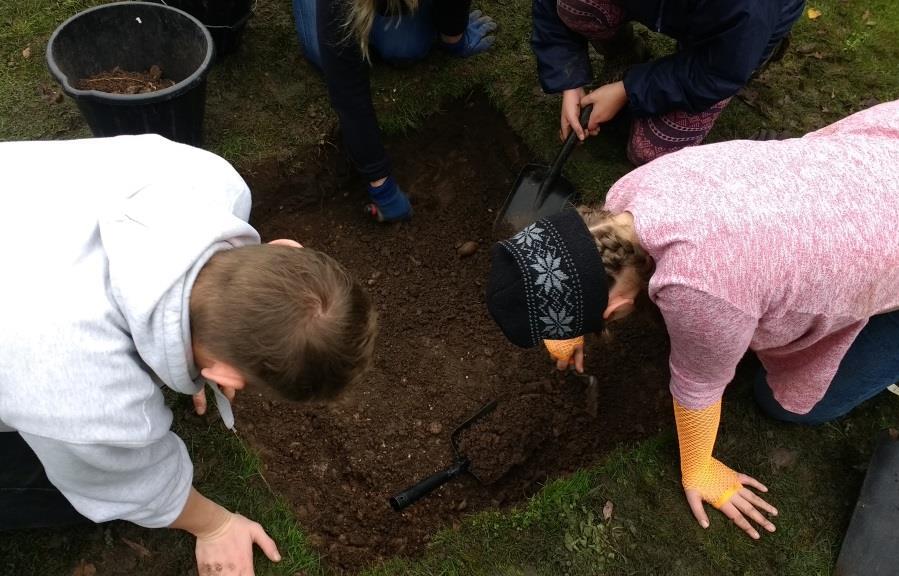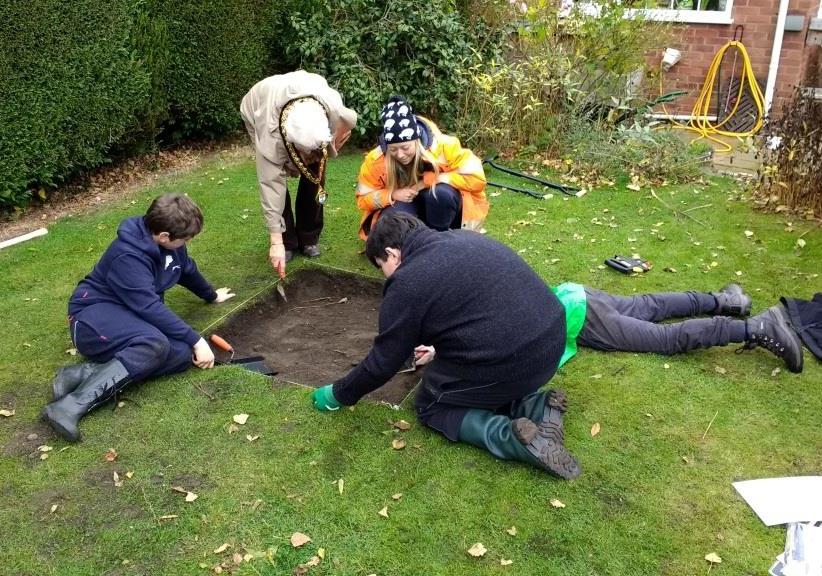Digging Small Pits, Big Ideas – day 1
- 14th November 2017
The first day finally arrived and the participating young people and archaeology undergraduates turned up bright and early to dig the first four Small Pits, Big Ideas test pits.
After a great introduction from Professor Carenza Lewis, who explained how the project is contributing to important academic research, the group split into four teams, gathered up their kit and headed off. The village is known to have medieval origins, but exactly when it formed and how it grew are unknown. Our four test pits were spread throughout the village to explore these changes.
Once test pits (1m2 holes) were marked out with string the hardest part began. De-turfing. Removing turf is not an easy job, but the teams rose admirably to the challenge of removing neat squares (one young person even claimed afterwards that de-turfing was their favourite part!).
Digging began under the guidance of archaeology students, from the University of Worcester, with support from Green Fingers staff and roving WAAS archaeologists. Test pits were dug in 10cm spits, to help separate finds from different depths. Quickly picking up the archaeological skills of trowelling and shovelling spoil, all four teams worked well together in digging deeper.

Excavating Test Pit 1
Hard work was soon rewarded with finds. Pottery sherds, clay pipe stems and iron nails all attest to the presence of past village residents. An interesting early find, from Test Pit 4, revealed that cheese was probably made at that house several hundred years ago. Ceramic sieves were used in the cheese making process and it was not uncommon for farms and village households to make their own.
Throughout the day we were visited by several Worcestershire County Councillors, who enjoyed finding out about the project and, in one case, had a go at finds sieving!

Team at Test Pit 4 with Cllr Anne Hingley and WAAS archaeologist Emma
Time went all too fast and suddenly it was time to pack up. Luckily the most essential of archaeological requirements, cake, was available whilst Carenza summed up the day and reminded everyone that more interesting finds likely awaited them tomorrow, as the test pits descended through older layers of history.
Read about Day 2 in our next blog…
Post a Comment